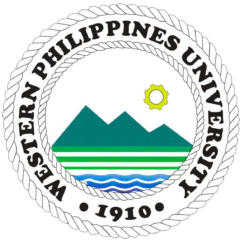![]()
Authors:
Gabriel A. Junco, Veronica P. Migo, Mart Merwin C. Magboo, and Ramon Christian P. Eusebio*
Department of Chemical Engineering, College of Engineering and Agro industrial Technology, University of the Philippines Los Baños, Laguna, Philippines
*Correspondence: rpeusebio@up.edu.ph
How to cite:
Junco GA, Migo VP, Magboo MMC and Eusebio RCP. 2023. Selection of optimal draw solution recovery technology for forward osmosis desalination system using analytical hierarchy process. The Palawan Scientist, 16(1): 38 47.
ABSTRACT
Water scarcity poses a significant threat to global food and water security, prompting a need for practical solutions. With 97% of Earth’s water situated in oceans, desalination emerges as a viable option. Among desalination technologies, forward osmosis (FO) using membrane-based technology stands out for its potential to reduce costs and energy requirements. The focus on energy consumption in FO has prompted an exploration of optimal technology selection through the Analytical Hierarchy Process (AHP), a multi-criteria decision-making method. Value judgments were collected through a questionnaire in consultation with two experts. Environmental aspects emerged as the most critical factor, weighted at 0.3963. The AHP analysis revealed nanofiltration (NF) as the optimal system, attaining a total weight of 0.2612. The NF scored highest in terms of environmental impact (C3), operating and maintenance costs (S6), and energy requirements (S4). Conversely, membrane distillation ranked as the least preferred alternative, with a total score of 0.1335, mainly due to lower maturity of technology (S3), higher capital costs (S5), and negative environmental impact (C3). Sensitivity analysis was conducted to investigate how changing weights for sub-criteria might affect the preferred technology. Notably, Reverse Osmosis became the most favored technology when efficiency (S1) and S3 weights were set at 0.3 and 0.2, respectively. Conversely, thermal separation gained preference when the weights for resistance to scaling and fouling (S2) and S5 were set at 0.3. Changes in S4, S6, and C3 have showed the most minor sensitivity.
Keywords: membrane, nanofiltration, thermal separation, water scarcity

This work is licensed under a Creative Commons Attribution-NonCommercial 4.0 International License
